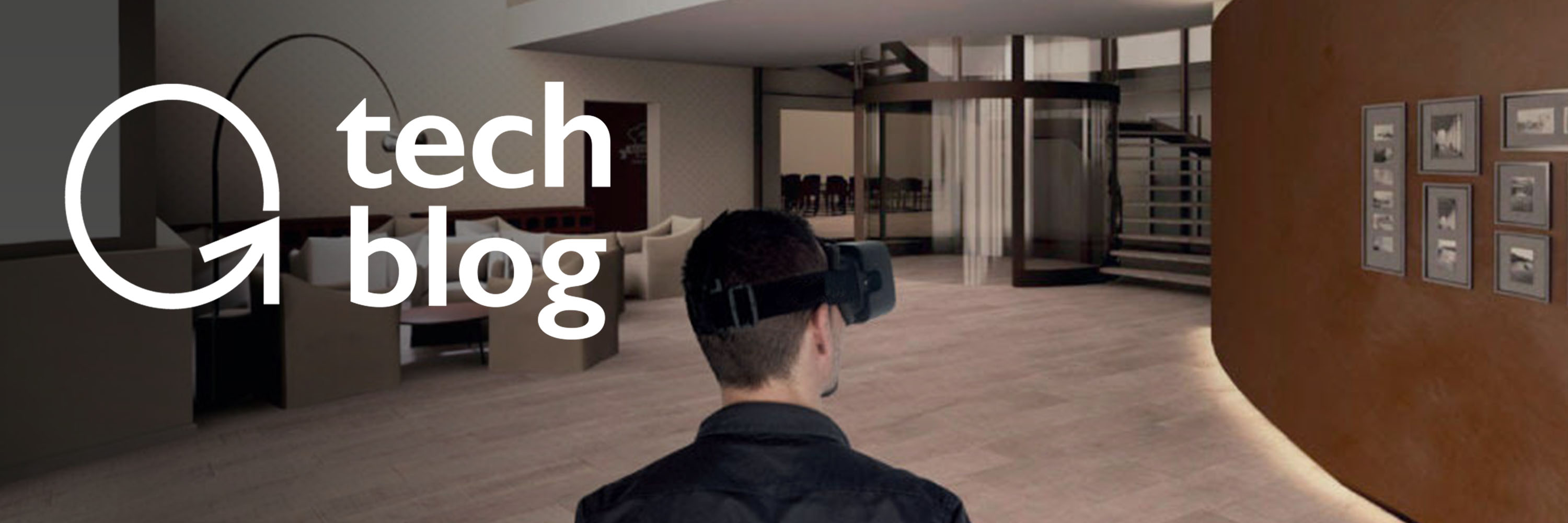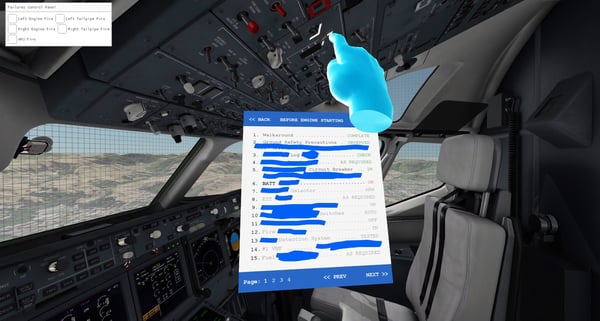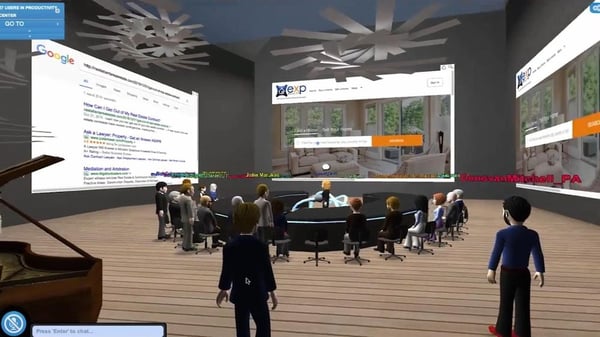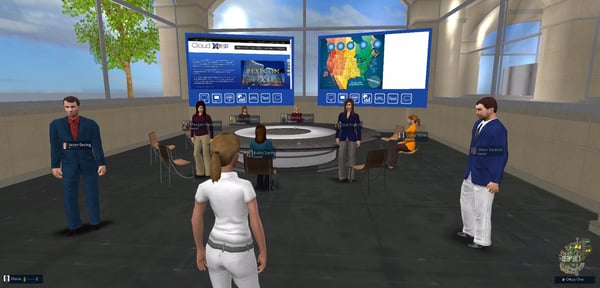
|
What is the future of work? Is our future one of ‘technological socialism’ (where technology is taking care of our needs)? Or is our future workplace completely virtualized, whereby we hang out at home in our PJ’s while walking about our VR Corporate HQ? This blog will look at the Future of Work during the age of Web 3.0… Examining scenarios in which AI, VR and the spatial web converge to transform every element of our career, from training, to execution, to free time. Three weeks ago, I explored the vast implications of Web 3.0 on news, media, smart advertising and personalized retail. And to offer a quick recap on what the Spatial Web is and how it works, let’s cover some brief history: A Quick Recap on Web 3.0: While Web 1.0 consisted of static documents and read-only data (static web pages), Web 2.0 introduced multimedia content, interactive web applications, and participatory social media, all of these mediated by two-dimensional screens. But over the next 2 to 5 years, the convergence of 5G, artificial intelligence, augmented reality and virtual reality, and a trillion-sensor economy will enable us to both map our physical world into virtual space and superimpose a digital data layer onto our physical environments. Suddenly, all our information will be manipulated, stored, understood and experienced in spatial ways. In this third installment of the Web 3.0 series, I’ll be discussing the Spatial Web’s vast implications for:
Let’s dive in. Virtual Training, Real-World Results…. Augmented reality and virtual reality have already begun disrupting the professional training market. As projected by ABI Research, the enterprise VR training market is on track to exceed $6.3 billion in value by 2022. Leading the charge, Walmart has already implemented VR across 200 Academy training centers, running over 45 modules and simulating everything from unusual customer requests to a Black Friday shopping rush. Then in September 2018, Walmart committed to a 17,000-headset order of the Oculus Go to equip every U.S. Supercenter, neighborhood market, and discount store with VR-based employee training. In the engineering world, Bell Helicopter is using VR to massively expedite development and testing of its latest aircraft, FCX-001. Partnering with Sector 5 Digital and HTC VIVE, Bell found it could concentrate a typical 6-year aircraft design process into the course of 6 months, turning physical mock-ups into CAD-designed virtual replicas. But beyond the design process itself, Bell is now one of a slew of companies pioneering VR pilot tests and simulations with real-world accuracy. Seated in a true-to-life virtual cockpit, pilots have now tested countless iterations of the FCX-001 in virtual flight, drawing directly onto the 3D model and enacting aircraft modifications in real-time. And in an expansion of our virtual senses, several key players are already working on haptic feedback. In the case of VR flight, French company Go Touch VR is now partnering with software developer FlyInside on fingertip-mounted haptic tech for aviation. Dramatically reducing time and trouble required for VR-testing pilots, they aim to give touch-based confirmation of every switch and dial activated on virtual flights, just as one would experience in a full-sized cockpit mockup. Replicating texture, stiffness and even the sensation of holding an object, these piloted devices contain a suite of actuators to simulate everything from a light touch to higher-pressured contact, all controlled by gaze and finger movements.  Source: Wired When it comes to other high-risk simulations, virtual and augmented reality have barely scratched the surface. Firefighters can now combat virtual wildfires with new platforms like FLAIM Trainer or TargetSolutions. And thanks to the expansion of medical AR/VR services like 3D4Medical or Echopixel, surgeons might soon perform operations on annotated organs and magnified incision sites, speeding up reaction times and vastly improving precision. But perhaps most urgent, Web 3.0 and its VR interface will offer an immediate solution for today's constant industry turnover and large-scale re-education demands. VR educational facilities with exact replicas of anything from large industrial equipment to minute circuitry will soon give anyone a second chance at the 21st century job market. Want to be an electric, autonomous vehicle mechanic at age 15? Throw on a demonetized VR module and learn by doing, testing your prototype iterations at almost zero cost and with no risk of harming others. Want to be a plasma physicist and play around with a virtual nuclear fusion reactor? Now you’ll be able to simulate results and test out different tweaks, logging Smart Educational Record credits in the process. As tomorrow’s career model shifts from a "one-and-done graduate degree" to continuous lifelong education, professional VR-based re-education will allow for a continuous education loop, reducing the barrier to entry for anyone wanting to enter a new industry. But beyond professional training and virtually enriched, real-world work scenarios, Web 3.0 promises entirely virtual workplaces and blockchain-secured authorization systems. Rise of the Virtual Workplace & Digital Data Integrity In addition to enabling an annual $52 billion Virtual Goods marketplace, the Spatial Web is also giving way to “virtual company headquarters” and completely virtualized companies, where employees can work from home or any place on the planet. Too good to be true? Check out an incredible publicly listed company called eXp Realty.  Source: Glassdoor Launched on the heels of the 2008 financial crisis, eXp Realty beat the odds, going public this past May and surpassing a $1B market cap on day one of trading. But how? Opting for a demonetized virtual model, eXp’s founder Glenn Sanford decided to ditch brick and mortar from the get-go, instead building out an online virtual campus for employees, contractors and thousands of agents. And after years of hosting team meetings, training seminars, and even agent discussions with potential buyers through 2D digital interfaces, eXp’s virtual headquarters went spatial. What is eXp’s primary corporate value? FUN! And Glenn Sanford’s employees love their jobs.  Source: Hypergrid Business In a bid to transition from 2D interfaces to immersive, 3D work experiences, virtual platform VirBELA built out the company’s office space in VR, unlocking indefinite scaling potential and an extraordinary new precedent: Foregoing any physical locations for a centralized VR campus, eXp Realty has essentially thrown out all overhead and entered a lucrative market with barely any upfront costs. Delocalize with VR technology, and you can now hire anyone with Internet access (right next door or on the other side of the planet), redesign your corporate office every month, throw in an ocean-view office or impromptu conference room for client meetings, and forget about guzzled-up hours in traffic. Throw in the Spatial Web’s fundamental blockchain-based data layer, and now cryptographically secured virtual IDs will let you validate colleagues’ identities or any of the virtual avatars we will soon inhabit. This becomes critically important for spatial information logs — keeping incorruptible records of who’s present at a meeting, which data each person has access to and AI-translated reports of everything discussed and contracts agreed to. But as I discussed in a previous Spatial Web blog, not only will Web 3.0 and VR advancements allow us to build out virtual worlds, but we’ll soon be able to digitally map our real-world physical offices or entire commercial high rises too. As data gets added and linked to any given employee’s office, conference room or security system, we might then access online-merge-offline environments and information through augmented reality. Imaging showing up at your building’s concierge and your AR glasses automatically check you into the building, authenticating your identity and pulling up any reminders you’ve linked to that specific location. You stop by a friend’s office, and his smart security system lets you know he’ll arrive in an hour. Need to book a public conference room that’s already been scheduled by another firm’s marketing team? Offer to pay them a fee and, once accepted, a smart transaction will automatically deliver a payment to their company account. With blockchain-verified digital identities, spatially logged data and virtually manifest information, business logistics take a fraction of the time, operations grow seamless and corporate data will be safer than ever. Final Thoughts While converging technologies slash the lifespan of Fortune 500 companies, bring on the rise of vast new industries and transform the job market, Web 3.0 is changing the way we work, where we work and who we work with. Life-like virtual modules are already unlocking countless professional training camps, modifiable in real-time and easily updated. Virtual programming and blockchain-based authentication are enabling smart data logging, identity protection and on-demand smart asset trading. And VR/AR-accessible worlds (and corporate campuses) not only demonetize, dematerialize, and delocalize our everyday workplaces, but enrich our physical worlds with AI-driven, context-specific data. Welcome to the Spatial Web workplace. Join Me (1) A360 Executive Mastermind: This is one of the key conversations I’ll be exploring at my Executive Mastermind group called Abundance 360. The program is highly selective, for 360 abundance- and exponentially minded CEOs (running $10M to $50B companies). If you’d like to be considered, apply here. Share this with your friends, especially if they are interested in any of the areas outlined above. (2) Abundance-Digital Online Community: I’ve also created a Digital/Online community of bold, abundance-minded entrepreneurs called Abundance-Digital. Abundance-Digital is my ‘onramp’ for exponential entrepreneurs – those who want to get involved and play at a higher level. Click here to learn more. |
Topics: Future of Work AR/VR cryptocurrencies blockchain Artificial Intellegence virtual reality Augmented Reality Web 3.0 Spatial Web office







